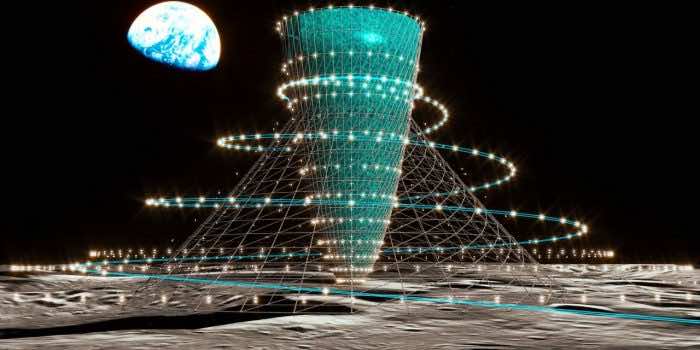Concepts for viable habitats on the moon and Mars have come and gone. And while all of those prospective solutions may be decades away, Japan has provided us with what may be the best proposition of them all.
“The Glass” is the name given to this gigantic 1,300-foot-tall rotating tower by Kyoto University researchers and Kajima Corporation, a Tokyo-based construction firm. The goal is to develop “artificial gravity living facilities” that rotate every 20 seconds using centrifugal force to achieve “normal gravity.”
“There is no strategy like this in other countries’ space development plans,” said Yosuke Yamashiki, head of Kyoto University’s SIC Human Spaceology Center, at a news conference at the university.
“Our plan represents important technologies crucial to ensuring human beings will be able to move to space in the future,” he added.
According to the Asahi Shimbun, the massive structure’s plans will take over a century to complete, but a simpler version of “The Glass” could be on the moon by 2050.
The team intends to construct two independent facilities, “Lunar Glass” for the moon and “Mars Glass” for Mars. According to the experts, as space tourism becomes more mainstream, there must be solutions to “reduce the impact on the health of people living on the moon or Mars that could be caused by low gravity,” Asahi Shimbun reported.
NASA and other studies have discovered that maintaining a continual state of weightlessness and traveling through diverse gravitational fields can result in bone loss, back pain, and kidney stones. The combined Kyoto-Kajima team, however, stated in a press release that “research on low gravity is limited to the maintenance of the adult body and its impact on childbirth and growth.”

According to reports, other proposals for these artificial-gravity facilities include forests and waterfronts to mimic Earth’s biodiversity and a transportation system called the “Hexagon Space Track System,” which will generate its gravity while traveling between Earth, the Moon, and Mars.
“Developing an artificial gravity residential facility with Kyoto University will be a watershed moment in space research,” said Takuya Ohno, an architect, and researcher at Kajima, in the press statement.
“We are committed to achieving the plan so it will be useful for human beings.”


